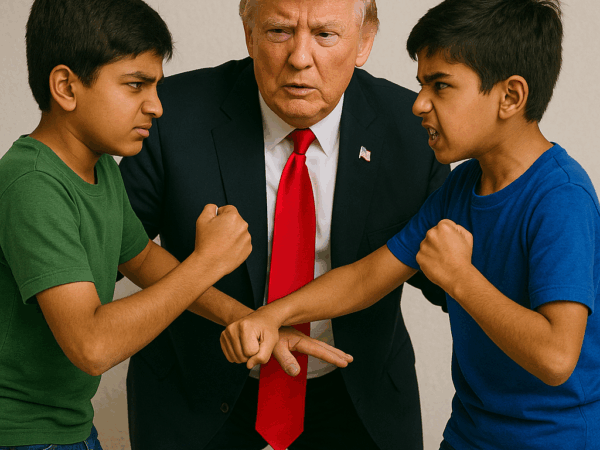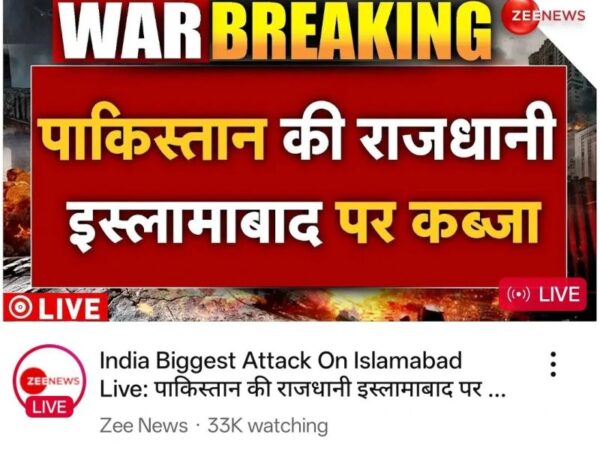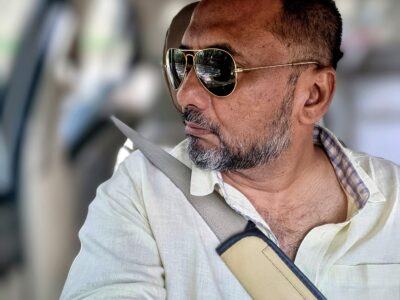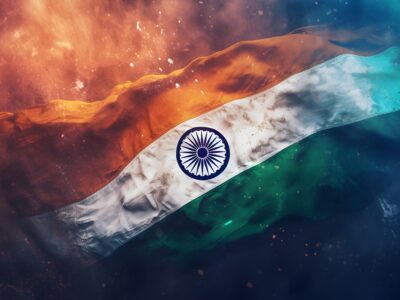This first appeared on LinkedIn.

Image: Anheuser-Busch Inbev for Corona Beer (This pic is tongue-in-cheek. Ignore if it doesn’t appeal to you).
Can we agree that our situation is different?
Let us all first agree that India and Indians seem to have very low numbers as compared to the rest of the world.
Let us also agree that as entrepreneurs and professionals, employees and employers, consumers and manufacturers, service providers and customers, we need to get back into the thick of it and sitting at home, hiding and waiting for the pandemic to pass us by is not going to help us, or the government, or the society, or the world.
There are various theories about this, and while I cannot get into each one individually, I can tackle some of them here.
Why are Indian numbers so low?
For starters, let us understand that it is not possible to hide deaths or misclassify them beyond a point. Our population is so large and our record-keeping so fairly robust that it should become impossible to lie about this by now.
Let me give you a two simple examples
- The average Indian family consists of 4.8 people and lives in a dwelling of 2 rooms which occupies a total of 494 sq ft in rural and 504 sq ft in urban India. That means, the total space per dweller is 103-117 sq ft (in reality, most have 60-65 sq ft), which is a square around 10 ft x 10 ft (or, as I said, mostly 8 ft x 8 ft). Note that this is the total space available per person and if the kind of social distancing as is advised by the WHO is to be maintained, no one will be able to move at all! Mind you that this is the median, which means that while there are dwellings that do occupy larger houses, there is a huge majority living in spaces that afford smaller than 8-10 ft x 8-10 ft per resident. And the less said about offices spaces and public transport the better. In summary: Social distancing is not practical in India. It never was. And will not be in the near future.
- There are literally only 2 cities in India that have recorded continuous running water. Those are Kota and Thiruvananthapuram. That was 10 years ago. There has been no update on that yet. I have no statistics of how many urban households and how many rural get any kind of water at all, but to expect that every Indian has access to water and soap that would allow them to repeatedly wash and rinse their hands for 20 seconds or more is to live in a fool’s paradise. In summary: Creating and releasing huge advertisements and catchy jingles about washing hands with soap for 20 seconds in a water-stressed country like India and hoping that would take care of the Coronavirus is like buying a health club membership and assuming that one is getting fitter just based on the act of swiping one’s card at the counter.
In fact, in places like Dharavi (located 3 square km of prime land in Mumbai), where there are 3.5 lakh people per square km, making it one of the densest populated places in the world, and with the kind of low hygiene standards brought on by our cultural issues combined with the lack of either water, sewage, or sanitation facilities, we should have observed Covid19 to be a much larger problem than it seems to be at the moment. It does not take a PhD in epidemiology to see that we should have seen the body count piling up there like nowhere else. And while it is indeed growing in Mumbai, and indeed fuelled by Dharavi to an extent, it is certainly not in line with what it should have been given the conditions.
The point is that the kind of conspiracy theorising that has been happening lately (most of it ignorant at best and racist at worst) is way off the mark. While it may be possible to mask or hide some deaths at really remote locations where the law and record-keeping agencies find it difficult to operate at full efficiency, such tiny pockets exist in almost any country with a sizeable population, but this does not and cannot skew numbers to such an extent as is being whispered in circles that ought to know better.
Is India really an outlier?
Now, this may come as a surprise to many, but the truth is India’s numbers are quite in line with comparable populations.
Here are the number of deaths per million as of 26 May 2020:
- Worldwide: 45.20
Here are the numbers for the world’s most populous countries:
- China (Population 1,439,323,776): 3
- India (Population 1,380,004,385): 3
- USA (Population 331,002,651): 304
- Indonesia (Population 273,523,615): 5
- Pakistan (Population 220,892,340): 5
- Brazil (Population 212,559,417): 116
- Nigeria (Population 206,139,589): 1
- Bangladesh (Population 164,689,383): 3
- Russia (Population 145,934,462): 26
- Mexico (Population 128,932,753): 63
And here are the numbers for the world’s most densely populated countries:
- Macau (21,055 people/km²): 0
- Monaco (19,150 people/km²): 102
- Singapore (8,109 people/km²): 4
- Hong Kong (6,677 people/km²): 0.5
- Gibraltar (5,620 people/km²): 0
- Bahrain (2,052 people/km²): 8
- Vatican City (1,820 people/km²): 0
- Maldives (1,719 people/km²): 9
- Malta (1,390 people/km²): 14
- Sint Maarten (1,234 people/km²): 350
India’s population density is around 464 people/km².
Then, here are the top 10 countries in terms of deaths per million population:
- San Marino: 1,238
- Belgium: 806
- Andorra: 660
- Spain: 580
- UK: 546
- Italy: 545
- France: 437
- Sweden: 409
- Sint Maarten: 350
- Netherlands: 342
And finally, here are the top 10 countries in terms of total deaths:
- USA: 100,579
- UK: 37,048
- Italy: 32,955
- France: 28,530
- Spain: 27,117
- Brazil: 24,549
- Belgium: 9,334
- Germany: 181,288
- Mexico: 8,134
- Iran: 7,508
The total deaths in India as of date (26 May 2020) are: 4,344
To put this into perspective, in 2019, the death rate in India was 7.3 per 1,000 people. That means 7,300 per million, or a total of over 10 million (1 Crore) people died in India last year. That makes it 27,600 deaths per day, which is over 6 times more than the total deaths by Covid19 to date, which is 78 days from the first recorded death in India, and a rate of slightly over 55 deaths per day, which is 0.2% of our normal rate.
Is it some sort of immunity Indians have built because of our public hygiene habits (which are horrid, as compared to our personal ones, which seem better than many)?
Or are we just behind the curve and will catch up in the next few months?
Or is there some genetic advantage we have? This is unlikely too since there are no “pure” Indians and so no one specific genetic strain we all share that others in Europe or Africa or China don’t.
It seems the strain of the virus in India is not unique to us. So, it isn’t that the virus is weaker here.
Is it our resistance to malaria, as speculated by some, given that the malarial regions of the world seem to be less impacted by the virus?
If you study where BCG is mandatory and whether that maps into the various differential rates of growth for Covid19, it would be clear that the BCG protocol has nothing to do with the growth and infection of the SARS-CoV-2 virus.
It’s got to be something else.
So, what gives?
Then there is the question of the exact mode of contagion:
- The virus cannot spread through mosquito bites.
- The virus cannot spread via food.
- The virus cannot spread via blood transfusion or through semen.
- The virus does not transmit through air. Now, while there are other studies that say it does linger in the air for some time, it does not seem to be concentrated enough to cause infection.
- Recently, it was in the news that the virus is difficult to transmit via surfaces. And this is big news because it kind of negates a lot of our prior knowledge about it.
- An infected person does not seem to be able to infect others after 11 days of getting the viral infection.
The takeaway?
Eventually, many of us will be C+, which may not mean we will be hospitalised or need ventilator support or die.
Regardless of how much we hide inside our homes, how many layers of PPE we wear, how isolated we make our lives, all we would be doing is:
- postponing the inevitable; and
- making our lives miserable.
But does it have to be this way?
It would seem from currently available information that:
- basic social distancing;
- clean masks;
- reasonable ventilation;
- regular hand-washing with soap;
- avoiding touching one’s mouth/nose/eyes; and
- commonsensical hygienic and sanitation practices
should suffice in avoiding getting infected, while:
- listening to your body;
- taking temperature more regularly than usual;
- being vigilant for symptoms like fever, cough, chest congestion, and unusual fatigue;
- commonsensical precautions during contact or proximity with other people that one would take anyway; and
- reporting to a doctor the moment one is unsure if one is infected, and not insisting on going to work or mingling with others
should be enough to keep one from transmitting it.
In fact, how and from what activities and under what conditions the virus may be transmitted is being clearer now, and the list is actually much smaller than you would imagine.
The vaccine is a long way off. The cure, maybe never (short of a miracle that would win someone a Nobel).
We cannot stop our lives the way we have, by hitting a Pause button out of the blue.
And we cannot kill ourselves in isolation.
The ideal way then would be to emulate the British stiff upper lip and courage under fire during the Battle of Britain in the last century, and keep calm & carry on. But in an Indian way.
What say, chaps?

Keep calm and carry on. In Hindi.

















